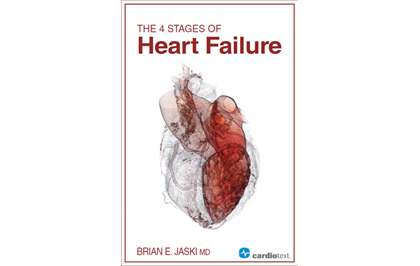Glossary of Terms
A glossary of terms used throughout the website is presented below. Use the alphabetical links to jump to terms beginning with that letter. If a term has an associated page on our website, its title will link you to that page.
A device implanted in the body that detects heart arrhythmias and counters them with an electric shock that resets the heart's rhythm.
Chest pain occurring as a result of inadequate oxygen supply to the heart muscle. Usually associated with blockages in the heart arteries.
An x-ray test in which dye is injected into an artery to detect narrowing or blockage in the vessel. A coronary angiogram looks at the arteries supplying the heart muscle.
Opening of a blocked blood vessel via a catheter.
Irregular heartbeat such as irregular, skipped, or extra beats that can originate in the upper chambers (atria) or lower chambers (ventricles) of the heart.
Narrowing or blocking of arteries by cholesterol or other fats and other fibrous tissue resulting in reduced blood flow.
Decreased heart rate (under 60 beats per minute, usually asymptomatic until 50 beats per minute).
One of the minute blood vessels that connect arterioles and venules. These blood vessels form an intricate network throughout the body for the interchange of various substances, such as oxygen and carbon dioxide, between blood and tissue cells.
Enlargement of the heart.
General term meaning there is something wrong with the function of the heart muscle. If the cause is not known, the term idiopathic cardiomyopathy is used.
The determination of the quantity of each type of blood cell in a given sample of blood, often including the amount of hemoglobin, the hematocrit, and the proportions of various white cells. Also called blood profile.
A material found in animal tissues and various foods, that is normally synthesized by the liver and is important as a constituent of cell membranes and a precursor to many hormones. Its level in the bloodstream can influence the development of certain conditions, such as atherosclerotic plaque and coronary artery disease.
Partial or complete blockage of the blood vessels that supply the heart muscle.
A noninvasive test that uses reflected sound waves off the heart to determine its size, structure, and function.
Fluid that leaks into the lungs causing congestion.
The amount of blood leaving the heart with each contraction. The amount ejected is measured as a fraction of the total amount of blood in the heart at the beginning of contraction. Normal is 55-75%.
A test to check the electrical activity of the heart, including its rhythm, evidence of enlargement, or the presence of a prior or recent heart attack. This test is also called an ECG or an EKG.
Secreting internally. Of or relating to endocrine glands or the hormones secreted by them.
The ability of the heart to meet the metabolic needs of the body only if heart filling pressures are abnormally high.
Accumulation of fluid in the lungs resulting from failure of the left ventricle.
The inability of the heart to pump blood forward at a sufficient rate to meet the metabolic needs of the body.
Failure of the pumping action of the left side of the heart resulting in congestion of the lungs or low heart output.
Failure of the pumping action of the right ventricle resulting in peripheral (systemic) edema or low heart output.
Treatment for end stage heart failure to replace a failing heart with a new donor heart.
Chemical signals produced by one tissue and conveyed by the bloodstream to another to effect physiological activity, such as metabolism or organ function.
High blood pressure.
See AICD.
Medical term for a heart attack. Death of heart muscle occurs due to inadequate blood flow and oxygen supply.
Of, relating to, or involving the interaction between the nervous system and the hormones of the endocrine glands.
See Edema, Peripheral.
See Edema, Pulmonary.
A small, latticed metal cylinder that is mounted on a balloon catheter for expansion into a narrowed artery. This will increase and maintain blood flow beyond the area held open by the stent.
A branch of the nervous system that modulates unconscious functions.
Laboratory analysis of urine, used to aid in the diagnosis of disease or to detect the presence of a specific substance, such as protein.
Vessels that carry or circulate fluids, such as blood, lymph, or sap through the body of an animal or a plant.


 Español
Español









